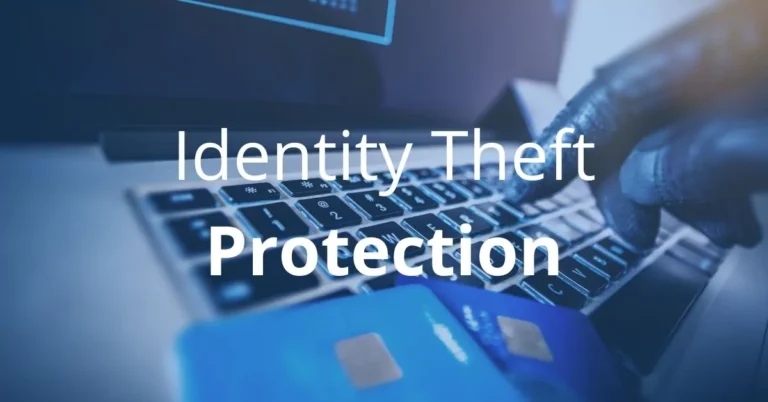Income/Asset Fraud: The Latest Schemes and How to Protect Yourself
Income and asset fraud are pervasive problems, costing individuals and businesses billions each year. Fraudsters are constantly devising new and sophisticated methods to deceive their victims, making it crucial to stay informed about the latest trends. This article explores some of the most recent income/asset fraud schemes and provides practical advice on how to protect yourself.
Emerging Trends in Income/Asset Fraud:
1. The Rise of Deepfakes and Synthetic Identities:
- Deepfakes: AI-powered tools can now create incredibly realistic fake videos and audio recordings of individuals. Imagine a scammer using a deepfake of your CEO to authorize a fraudulent transaction or a deepfake of a family member to request urgent financial assistance.
- Synthetic Identities: These are fabricated identities that combine real and fake information. Fraudsters use them to open accounts, obtain credit, and even secure government benefits. These identities are difficult to detect because they don’t trigger traditional fraud alerts.
2. Cryptocurrency’s Wild West:
- Investment Scams: Fraudsters lure victims with promises of high returns on non-existent or worthless cryptocurrencies. These scams often involve sophisticated websites and marketing materials.
- Phishing and Wallet Attacks: Criminals use phishing emails and malicious websites to steal login credentials for cryptocurrency wallets. They may also exploit vulnerabilities in cryptocurrency exchanges and platforms.
- Rug Pulls and Exit Scams: Developers of new cryptocurrencies can suddenly abandon a project, taking investors’ funds with them. This is particularly common in the decentralized finance (DeFi) space.
3. Remote Work Exploitation:
- Business Email Compromise (BEC): Scammers impersonate company executives or vendors to trick employees into making unauthorized wire transfers or revealing sensitive information.
- Remote Access Scams: Fraudsters pose as IT support to gain remote access to employees’ computers, allowing them to steal data or install malware.
- Payroll Fraud: Criminals may redirect employee paychecks to fraudulent accounts or manipulate payroll systems to increase their own compensation.
4. Social Media as a Fraudster’s Playground:
- Investment and Romance Scams: Fraudsters use social media to build trust with victims before luring them into investment schemes or romance scams.
- Misinformation and Market Manipulation: Social media can be used to spread false information about companies or cryptocurrencies, influencing market prices and defrauding investors.
- Data Harvesting: Criminals collect personal information from social media profiles to create synthetic identities or conduct phishing attacks.
5. The Evolution of Traditional Schemes:
- Loan Application Fraud: Fraudsters use fake documents and synthetic identities to obtain loans they never intend to repay.
- Insurance Fraud: Scammers stage accidents or exaggerate claims to collect fraudulent insurance payouts.
- Tax Fraud: Criminals underreport income, claim false deductions, or use stolen identities to file fraudulent tax returns.
Real-World Examples:
- The iCon Clinic Scandal (October 2024): In Thailand, authorities are investigating the iCon Group, a direct-sales firm, for alleged fraudulent activities. Assets have been seized from the company and its CEO, including funds in various accounts and digital assets.
- LSV Asset Management Lawsuit (October 2024): Former executives of LSV Asset Management are suing the firm, claiming a fraudulent share sale scheme that deprived them of their earned stock.
- Healthcare Fraud Crackdown (2023): The US Justice Department took action against a massive healthcare fraud scheme involving telemedicine scams and illegal prescriptions, leading to numerous arrests and asset seizures.
Protecting Yourself from Income/Asset Fraud:

1. Strengthen Your Cybersecurity:
- Strong Passwords: Use unique, complex passwords for each of your online accounts. Consider a password manager to help you generate and store secure passwords.
- Two-Factor Authentication (2FA): Enable 2FA wherever possible. This adds an extra layer of security by requiring a code from your phone or another device to log in.
- Software Updates: Keep your operating system, browser, and antivirus software up to date to patch security vulnerabilities.
- Secure Wi-Fi: Use a strong password for your home Wi-Fi network and avoid using public Wi-Fi for sensitive transactions.
2. Practice Safe Online Habits:
- Beware of Phishing: Be wary of unsolicited emails, texts, or calls asking for personal information or login credentials. Verify the sender’s identity before clicking on links or downloading attachments.
- Secure Websites: Only use websites with “https” in the URL and a padlock icon in the address bar, especially when entering sensitive information.
- Social Media Caution: Limit the personal information you share on social media and be skeptical of friend requests from people you don’t know.
3. Monitor Your Finances Regularly:
- Check Account Activity: Review your bank and credit card statements frequently for any unauthorized transactions.
- Credit Reports: Monitor your credit reports regularly for any suspicious activity or accounts you don’t recognize. You can obtain free credit reports from each of the major credit bureaus annually.
- Credit Freeze: Consider placing a credit freeze on your credit reports to prevent fraudsters from opening new accounts in your name.
4. Exercise Due Diligence:
- Research Investments: Thoroughly research any investment opportunity, especially those promising high returns with little risk. Be wary of unsolicited investment offers.
- Verify Identities: If you’re contacted by someone claiming to represent a company or organization, verify their identity independently before sharing any information.
- Get Everything in Writing: Request all agreements and confirmations in writing. Carefully review documents before signing them.
5. Educate Yourself and Others:
- Stay Informed: Keep up-to-date on the latest fraud trends and scams by following reputable news sources and security advisories.
- Share Knowledge: Educate your family and friends about fraud prevention strategies, especially those who may be more vulnerable to scams.
6. Report Suspicious Activity:
- Contact Authorities: If you suspect you’ve been a victim of fraud, report it to the police, your bank, and the Federal Trade Commission (FTC).
- File a Complaint: You can also file a complaint with the FTC online or by phone.
10 FAQs About Income/Asset Fraud
Q1: What is income/asset fraud?
A: Income/asset fraud encompasses a wide range of illegal activities aimed at deceiving individuals or organizations to gain financial benefits. This can involve misrepresenting income or assets to obtain loans, benefits, or other financial advantages, or outright theft of funds or property.
Q2: What are some common types of income/asset fraud?
A: Common examples include:
- Loan application fraud: Falsifying income or employment information to qualify for loans.
- Tax fraud: Underreporting income, claiming false deductions, or using stolen identities to evade taxes.
- Insurance fraud: Staging accidents or exaggerating claims to receive fraudulent insurance payouts.
- Investment scams: Luring victims with promises of high returns on fake or worthless investments.
- Identity theft: Stealing personal information to open accounts, obtain credit, or commit other financial crimes.
Q3: How can I protect myself from income/asset fraud?
A: Key protective measures include:
- Secure your accounts: Use strong passwords, enable two-factor authentication, and monitor your accounts regularly.
- Be cautious online: Beware of phishing scams, suspicious links, and requests for personal information.
- Stay informed: Keep up-to-date on the latest fraud trends and scams.
- Research investments: Thoroughly investigate any investment opportunity before committing funds.
- Report suspicious activity: Contact the authorities if you suspect you’ve been targeted or victimized by fraud.
Q4: What are the red flags of an investment scam?
A: Be wary of:
- High-pressure sales tactics: Urgency or limited-time offers.
- Guaranteed high returns: Promises of unrealistic profits with little or no risk.
- Unlicensed sellers: Individuals or companies not registered with relevant authorities.
- Secretive or complex strategies: Investments that are difficult to understand.
- Offshore accounts: Requests to transfer money to overseas accounts.
Q5: What should I do if I suspect I’m a victim of identity theft?
A: Take immediate action:
- Contact your bank and credit card companies: Report any unauthorized activity.
- Place a fraud alert or credit freeze on your credit reports: Prevent new accounts from being opened in your name.
- Report the theft to the Federal Trade Commission (FTC): File a complaint online or by phone.
- File a police report: Obtain a copy for your records.
Q6: How can I verify the authenticity of a website or online offer?
A:
- Check the website’s security: Look for “https” in the URL and a padlock icon.
- Research the company: Verify their contact information and registration with relevant authorities.
- Read online reviews: See what other users are saying about the website or offer.
- Be wary of unsolicited offers: Exercise caution with emails, texts, or calls from unknown senders.
Q7: What are the latest trends in income/asset fraud?
A: Emerging threats include:
- Deepfakes and synthetic identities: AI-powered tools used to create convincing fake identities and manipulate information.
- Cryptocurrency scams: Fraudulent investment schemes, phishing attacks, and “rug pulls” targeting crypto investors.
- Remote work exploitation: Scammers targeting remote workers through business email compromise and other tactics.
- Social media manipulation: Using social media to spread misinformation, promote scams, and gather personal data.
Q8: What are some resources for learning more about fraud prevention?
A: Valuable resources include:
- The Federal Trade Commission (FTC): www.ftc.gov
- The Federal Bureau of Investigation (FBI): www.fbi.gov
- The Internet Crime Complaint Center (IC3): www.ic3.gov
- The Consumer Financial Protection Bureau (CFPB): www.consumerfinance.gov
Q9: How can I report income/asset fraud?
A: Contact the appropriate authorities:
- Local law enforcement: File a police report.
- Federal Trade Commission (FTC): File a complaint online or by phone.
- Internet Crime Complaint Center (IC3): Report cybercrime incidents.
- Your financial institution: Report any unauthorized account activity.
Q10: What are the penalties for income/asset fraud?
A: Penalties vary depending on the severity of the crime and can include:
- Fines: Substantial financial penalties.
- Restitution: Repayment to victims.
- Imprisonment: Jail time for serious offenses.
- Damage to credit: Difficulty obtaining loans or credit in the future.
Conclusion:
Income and asset fraud are constantly evolving threats. By staying informed about the latest schemes and taking proactive steps to protect yourself, you can reduce your risk of becoming a victim. Remember to be vigilant, secure your accounts, and report any suspicious activity to the authorities.






